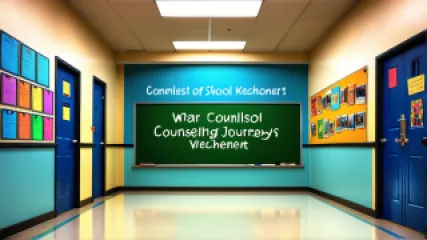My Journey as a School Counselor Helping Students Thrive
My Journey as a School Counselor Helping Students Thrive
As a school counselor, I have had the privilege of witnessing the transformation and growth of countless students over the years. My journey in this field has been a profound and humbling experience, filled with moments of triumph, challenge, and profound personal growth. In this article, I want to share my story - the ups and downs, the lessons learned, and the deep sense of purpose that has sustained me through it all.
The Calling to Serve
From a young age, I felt a strong pull towards the world of education and mental health. I was always the one in my peer group who lent a listening ear, offered a shoulder to lean on, and championed the underdog. It was this innate desire to help and support others that led me to pursue a career as a school counselor.
During my university studies, I was exposed to the immense challenges and complexities that students face in their daily lives. From academic pressures and social anxieties to family difficulties and mental health struggles, I quickly realized that the role of a school counselor was far more multifaceted than I had initially imagined. This realization only fueled my passion, as I knew that I had the opportunity to make a tangible difference in the lives of young people.
Stepping into the Role
After completing my education and training, I eagerly accepted my first position as a school counselor. I vividly remember the first day I stepped into the school building, my heart brimming with excitement and a touch of trepidation. I knew that the work ahead would be demanding, but I was determined to make a lasting impact.
In those early days, I spent countless hours familiarizing myself with the unique needs and challenges of the school community. I listened intently to the stories of students, parents, and teachers, seeking to understand the intricate web of relationships and dynamics that shaped the school's environment. It was a steep learning curve, but one that I embraced with an open heart and a deep well of empathy.
Building Connections and Trust
As I settled into my role, I quickly realized that the foundation of my work as a school counselor would be built upon the relationships I forged with the students. Earning their trust and creating a safe, welcoming space for them to share their thoughts and feelings was of the utmost importance.
I made it a priority to be present and accessible, making myself available for impromptu check-ins and informal conversations. I learned the names of every student in the school, and made a concerted effort to greet them by name in the hallways and during lunch periods. This simple act of recognition went a long way in helping students feel seen, valued, and genuinely cared for.
In addition to one-on-one interactions, I also spearheaded group counseling sessions, workshops, and educational initiatives that addressed the unique needs of the student body. From anxiety management techniques to college readiness programs, I worked tirelessly to provide resources and support that would empower students to navigate the challenges of adolescence with greater confidence and resilience.
Navigating Challenges and Setbacks
Of course, my journey as a school counselor has not been without its fair share of challenges and setbacks. There have been times when I've felt overwhelmed by the sheer volume of needs and the limited resources at my disposal. I've witnessed students struggle with devastating personal crises, and have had to navigate the delicate balance of providing support while also respecting their privacy and autonomy.
In those difficult moments, I've had to dig deep and draw upon my inner reserves of strength and resilience. I've learned to practice self-care, to seek support from my colleagues and mentors, and to approach each challenge with a renewed sense of determination and optimism. After all, the work we do as school counselors is not just a job – it's a calling, a lifelong commitment to the well-being of our students.
Witnessing Transformation and Growth
Despite the challenges, the most rewarding aspect of my work as a school counselor has been witnessing the remarkable transformation and growth of the students I've had the privilege of supporting. It's in those moments when a student who once struggled with anxiety steps up to deliver a confident public speech, or when a student who once felt isolated and misunderstood finds the courage to reach out and connect with their peers.
I've seen students overcome academic hurdles, navigate complex family dynamics, and develop the social-emotional skills necessary to thrive. And in those moments, I'm reminded of the profound impact that a caring, supportive adult can have on the life of a young person.
Embracing the Future
As I look ahead to the future of my career as a school counselor, I am filled with a deep sense of optimism and purpose. The field of school counseling is constantly evolving, with new challenges and opportunities emerging on the horizon. From the increasing prevalence of mental health issues among students to the growing need for comprehensive college and career readiness programs, the role of the school counselor has never been more vital.
I am committed to staying at the forefront of these developments, continuously expanding my knowledge and skills to better serve the students in my care. Whether it's mastering the latest evidence-based practices in mental health intervention, or spearheading innovative initiatives to support student well-being, I will always strive to be a true advocate and champion for the young people I work with.
Conclusion
My journey as a school counselor has been a truly transformative and rewarding experience. It has challenged me, humbled me, and ultimately, led me to a deeper understanding of the incredible resilience and potential that lies within each and every student. As I reflect on the countless lives I've had the privilege of touching, I am filled with a profound sense of gratitude and a renewed determination to continue making a difference, one student at a time.
To all the aspiring school counselors out there, I encourage you to embrace this calling with open arms. The work may be demanding, but the rewards are immeasurable. Together, let us continue to build a world where every student can thrive, discover their passions, and unlock their limitless possibilities.






